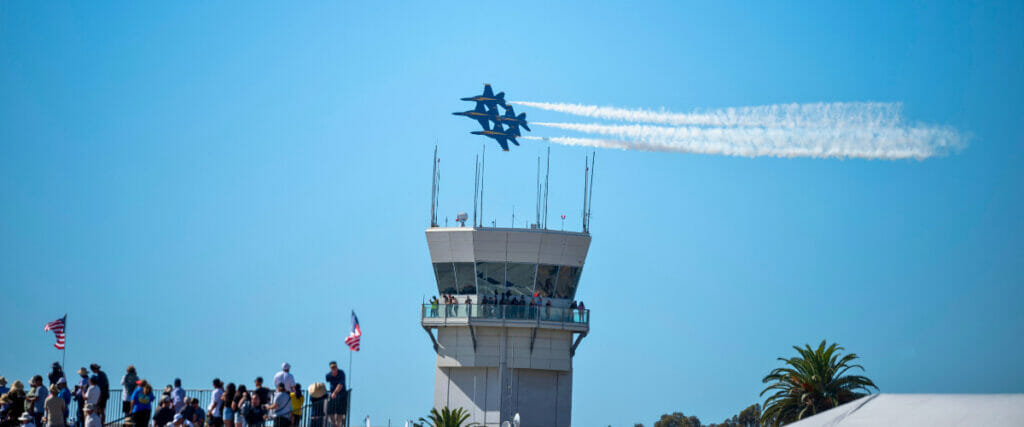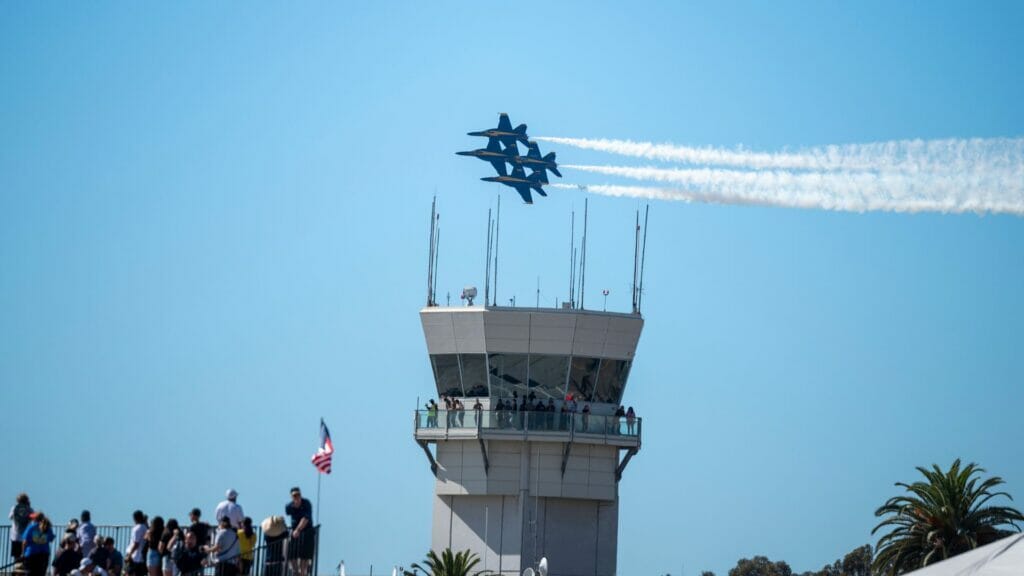
When it comes to precision and exhilarating aerobatics, the United States Navy Blue Angels stand at the forefront, capturing the hearts of aviation enthusiasts and spectators worldwide. While their dazzling performances are admired, there are several intriguing aspects about this elite flight demonstration squadron that often go unnoticed. Let’s take a closer look at 10 things you might not know:
10 Things You Might Not Know
Origins
1. Post-WWII Origins: Chief of Naval Operations, Admiral Chester W. Nimitz, who commanded troops during World War II, established The Blue Angels on April 24, 1946.
2. First Air Show: The first air show that the Blue Angels performed in took place on June 15, 1946, in Craig Field, Jacksonville, Florida.
3. Team Name: The name was picked by the original team when they were planning a show in New York in 1946. One of them came across the name of the city’s famous Blue Angel nightclub in the New Yorker Magazine.
Who They Are
4. Widely Viewed: The Blue Angels team has an estimated 11 million spectators who view the squadron each year.
5. TOPGUN Prerequisite? Some current and former Blue Angels pilots have gone through TOPGUN; however, it is not a prerequisite.
6. Ambassadors of Goodwill: The Blue Angels visit more than 50,000 people between March and November (the show season) during hospital and school visits.
7. Iconic Fat Albert: The Blue Angels fly with C-130, “Fat Albert” because of its size and shape, referencing a popular children’s cartoon of the same era. Fat Albert’s maximum takeoff weight is 155,000 pounds and it holds 43,450 pounds of fuel. This C-130’s normal cruising speed is about 400 MPH. Generally, seven Marines are assigned to operate Fat Albert Airlines: three pilots, two loadmasters, and two flight engineers.
Capabilities
8. Maneuver Heights: The lowest maneuver height is the Sneak Pass (as low as 50 feet), and the highest maneuver height is the Opposing Solo (up to 15,000 feet). These heights vary depending on weather conditions.
9. Close Proximity: During the exhilarating Diamond 360 maneuver, the diamonds will come within a breathtaking 18 inches of each other!
10. Air Show Speeds: The fastest speed flown during a performance is about 700 mph (just under Mach 1; Sneak Pass). The slowest speed flown during a performance is around 120 mph (indicated speed; Section High Alpha). Both are flown by the solo pilots during the show.
The Navy Blue Angels are not just pilots executing awe-inspiring aerial stunts. They are a symbol of precision, dedication, and excellence. With a rich history and an unwavering commitment to their craft, they continue to captivate audiences while embodying the Navy’s values and capabilities. So, the next time you witness their remarkable displays, remember these lesser-known facts that make their performances all the more remarkable.
Related Links:
- The Blue Angels Frequently Asked Questions
- Information about the Air Show Performers
- Performance Schedule


